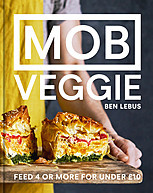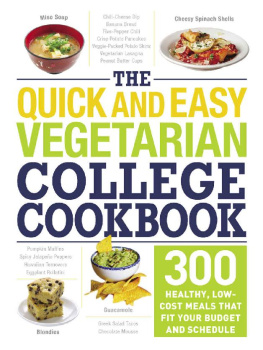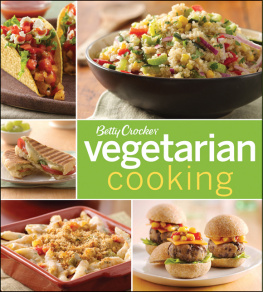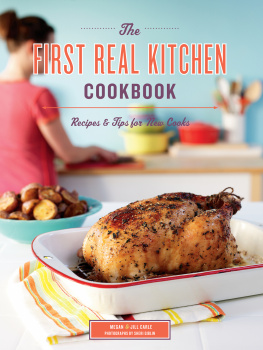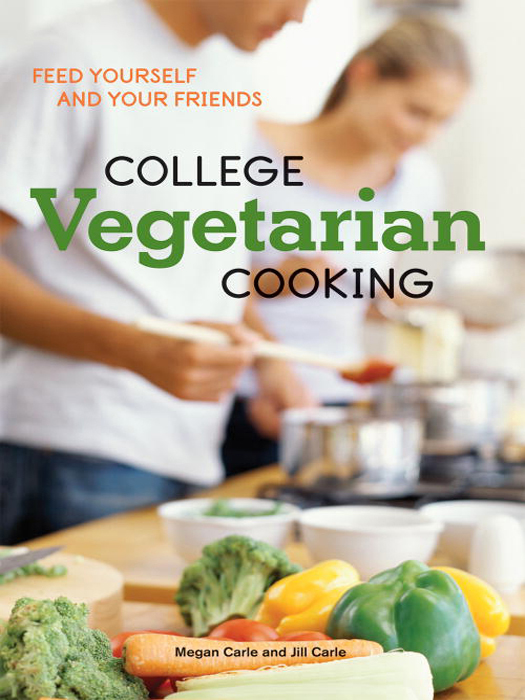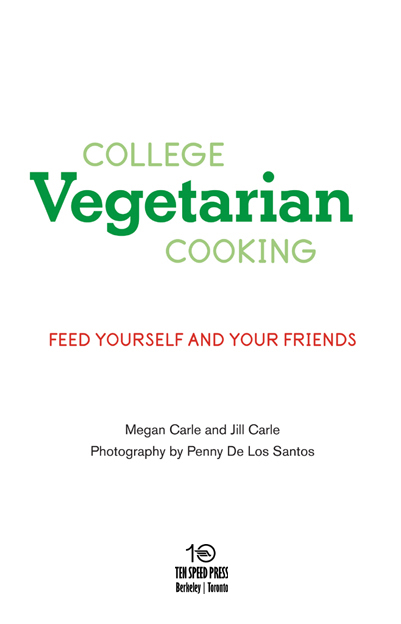Copyright 2009 by Megan Carle and Jill Carle
Photography copyright 2009 by Penny De Los Santos
Front cover photography copyright 2009 Getty Images/Stockbyte
All rights reserved.
Published in the United States by Ten Speed Press, an imprint of the Crown Publishing Group, a division of Random House, Inc., New York.
www.crownpublishing.com
www.tenspeed.com
Ten Speed Press and the Ten Speed Press colophon are registered trademarks of Random House, Inc.
Library of Congress Cataloging-in-Publication Data
Carle, Megan.
College vegetarian cooking: feed yourself and your friends / Megan Carle and Jill Carle; photography by Penny de los Santos.
p. cm.
Includes index.
1. Vegetarian cookery. 2. Vegan cookery. I. Carle, Jill. II. Title.
TX837.C345 2009
641.5636--dc22
2008043147
eISBN: 978-1-60774-120-6
Design by Betsy Stromberg
Food and prop styling by Jenny Martin-Wong
v3.1
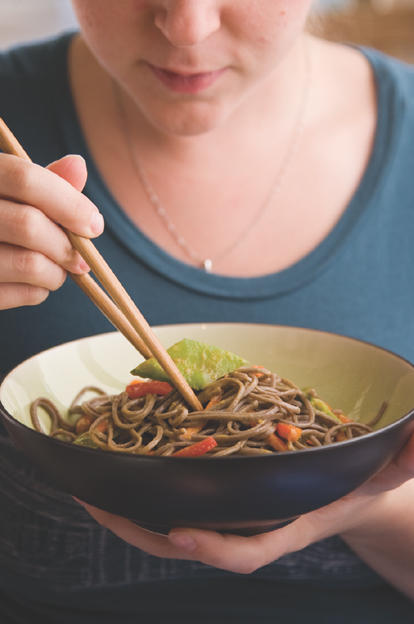
Contents
Chapter 1:
Chapter 2:
Chapter 3:
Chapter 4:
Chapter 5:
Chapter 6:
Chapter 7:
Chapter 8:
Chapter 9:
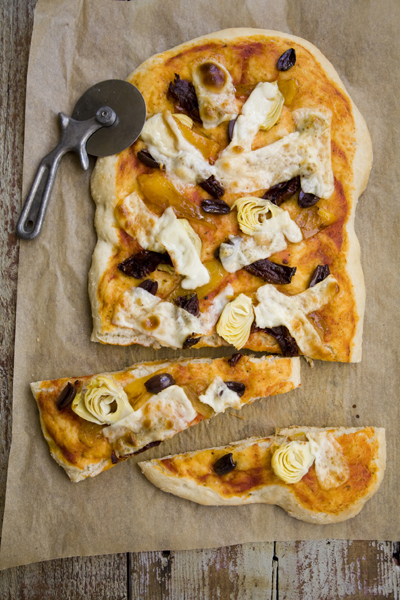
Introduction
Its not easy being green. I bet Kermit didnt know he was speaking on behalf of vegetarians everywhere, but he was. People are much more aware today than they were even ten years ago about vegetarian and veganismso it all seems a lot less weird to most people. But its still a way of eating that takes time and energy, and the willingness to educate yourself about nutrition and, sometimes, to stick up for your choices. It can feel like a lot of work. So we developed the recipes in this book to help you keep your food low-stress, delicious, and fun. Our goal was to focus on leaving out the meat without leaving out the taste, and after several rounds of recipe testing, our guinea pigsmost of whom were not vegetariansjust kept coming back for more.
Come to think of it, its not so easy just plain feeding yourself. Even if you cooked before you left home, like we did, cooking on your own is going to be different than what youre probably used to. Believe us. As sisters, we started learning to cook in our family kitchen when we were kids. And then we went off to college. And graduate school. We learned quickly what its like to cook on a hot plate with one busted pot, after having scrounged for grocery money under the couch cushions. Okay, slight exaggeration, but we definitely found that having less equipment, fewer dishes, and way less money to spend on food affects the way you cook and the kinds of things you cook. Thats one of the reasons we wrote this book.
We also wrote it because we noticed how easy it is for students who dont have much money or confidence in the kitchen to get into really boring and not-so-healthy patterns of eatingeven vegetarians (ramen, anyone?). The good news is that, since youre one of more than twelve million Americans who dont eat meat, you have a ton of cheap, tasty, healthy options, from good old cheese and pasta to soymilk to superfoods like broccoli and quinoa. (Whats quinoa? Glad you asked! Check out .) Vegetarian cooking is no harder to learn or do than any other kind of cooking, and even beginners can whip out veggie comfort food (real mac and cheese), fast food (pizza, wraps), simple food (stir-fries), impressive food (fondue!), and decadent food (mmmm, dessert ) with just a little direction.
So this book aims to set you up with the basic skills and knowledge youll need to get started, and to help you stay out of the baked potato rut (because seriously, who doesnt love a good spud, but not every day, okay?). If you know nothing about cooking, well teach you something. If you have some kitchen chops and some favorite dishes, well share more with you.
The first pages of the book have an overview of the ingredients and equipment we feel are essential to setting up a rudimentary vegetarian kitchen, and some of the basic skills and techniques youll need there (cooking rice and pasta, for example). This is a good place to start if in the past youve mostly thought of the kitchen as the place where the frozen fudge pops are stored. Helpful shopping, prepping, cooking, and storing advice (and also some fun trivia) is scattered after the recipes throughout the book. Because we know the likelihood of you sitting down to dinner at six oclock every night is practically nonexistent, we categorized the recipes a little differently than in most cookbooks, which tend to group things by ingredient (beans, vegetables) , right? Nuff said.
Kitchen Basics
Here are some basics about ingredients, equipment, and cooking techniques that you should know before starting in on the recipes. We dont explain this stuff throughout the book because it comes up a lot and so it makes more sense to keep it in one place. Youll probably want to refer back here often.
Ingredients
Bouillon: This is basically dehydrated vegetable stock, and its a key component to making sure your soups and sauces have good, full flavor. In this book, we used bouillon cubes instead of stock or broth because theyre cheaper and a lot lighter to carry home from the store. The only size of vegetable bouillon cubes we found are extra large and are dissolved in 2 cups of water. If you find regular-sized ones, just use two for every one we call for. If you are using broth or stock, just substitute that for the water called for in the recipe (and leave out the bouillon cube, of course). No-salt-added vegetable bouillon cubes are a great option if your store carries them. They contain about 10 percent of the sodium of regular cubes, but still deliver all the flavor.
Breadcrumbs: We use plain breadcrumbs, but its not that big of a deal for any of the dishes in this book. If what you have on hand is seasoned, dont make a special trip to the store; theyll work fine. Or if you dont have any at all, place a few slices of bread in the oven at 250F for 20 minutes, or until they are dried out. Cool completely and break the slices into half-inch pieces. Place in the blender and pulse until smooth.
Butter: Weve always used salted butter. It used to be because thats what Mom bought, but now its because we prefer salted butter to use on bread and its too much hassle to buy both kinds. If you prefer unsalted, you may need to add a little extra salt to the recipes. Margarine can be substituted for butter in all of the recipes in this book. Substituting can often be a problem with desserts, but we made all of these vegan so you wouldnt have to worry about it. We use stick margarine rather than soft; choose a brand that is free of trans fats.
Cooking spray and oil: Fats got a bad rep, but some fat is part of a healthy diet (your brain especially needs healthy fats to function well). Also, you often need it to cook with. We usually say butter or spray the pan in recipes. We always spray. Its faster, you dont have to get your hands all greasy, and its much lower in fat, and therefore calories. We use plain, unflavored cooking spraywhich is just cooking oil and an emulsifier in an aerosol can or pump bottleand since were paying for it now, we buy the store brand. Its cheaper and it works just as well as name-brand products. Canola, corn, or vegetable oils are good to cook with: its flavor is neutral. If you want to cook with olive oil, the plain, nonfancy stuff will dosave the extra virgin olive oil for salad dressing. And for future reference, olive oil is not a substitute for canola oil, especially in dessert recipes. Brownies with olive oil are really gross. Ask my roommate.



